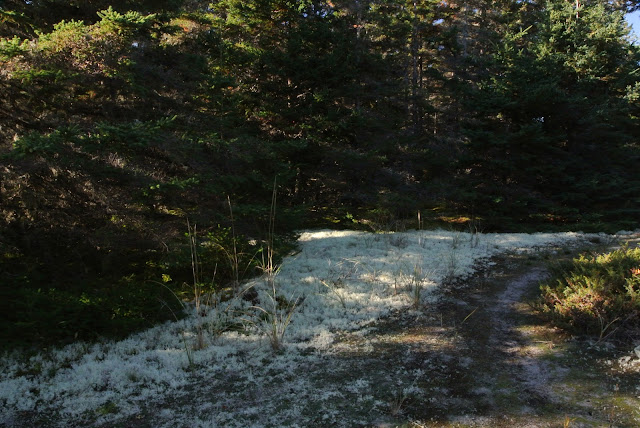Today
I attended the annual Remembrance Day service in Lunenburg. The location of the
memorial park is high on the hill which defines the town and looks down and
across the scenic and naturally protected harbour. Included within the memorial
park is a monument to the WWII "Camp Norway”.
The
following taken from the web-site of the Royal Norwegian Embassy in Ottawa,
describes a little of Norwegian contribution to WWII and the creation of Camp Norway ~
In
1940 Norway, with a population of some 3,000,000, had the third largest ocean-going Merchant fleet in the world, about 1100 ships. When Nazi Germany invaded the
country without warning on the 9th of April that year, 1024 of those ships were
at sea. The King and government immediately ordered them all to proceed to
allied ports. At the same time, the German-backed government that had been set
up in Oslo under Vidkun Quisling, was broadcasting orders for the ships to
return home. Not a single one did so,
resulting in Norway's great merchant fleet being at the disposal of the Allies.
When
the King and government escaped to England, they set up a government-in-exile
and took control of all Norwegian ships outside of Norway through Nortraship
(The Norwegian Shipping and Trade Mission) and made them fully available to the
Allies. This was a very important contribution since until 1942 Norwegian ships
carried about half of the fuel and one third of all other supplies that were
transported to Britain. The Norwegian merchant fleet lost 570 ships, and
suffered nearly 4,000 seamen dead and about 6,000 sick or wounded.
The
Antarctic whaling fleet, with about 2,000 men, came into Halifax in the spring
of 1940 to await further orders. In Halifax, the Norwegians set up offices for
the Royal Norwegian Navy and Nortraship as well as a hospital, a seamen's
church and a seamen's club. In November of 1940 they established a training
facility, called Camp Norway, in Lunenburg to train gunners for Norwegian
merchant ships. They also bought a hotel in Chester in which they set up a
convalescent home for sick and injured seamen. The Norwegian Army also had a
small base in Lunenburg from the spring of 1942 to the summer of 1943.
Countless Norwegians trod the streets of Halifax and sailed out of this port
during the war.
The
population of Lunenburg in 1940 was just over 2500. Most of the young men had
joined the armed forces or were at sea on merchant ships. As one old-timer
said, "The ones left were too young or too old or not fit". According
to newspaper reports the Norwegians were very well received by the townspeople
and it wasn't long before they were taking part in the social activities of the
town. Their Sunday morning parades to Zion's Lutheran Church became a weekly
spectacle and they began holding evening benefits in aid of the Red Cross.
The
presence of the Norwegians also had a significant effect on the economy. Here
were hundreds of men, most of them young, with money in their pockets which
they couldn't send home, so they spent it locally. When the whalers received
their final shares of the sale of the whale oil, they had plenty because their
shares were based on the selling price of the oil and it had increased quite
considerably due to the war. It is said that they bought so many cars that they
cleaned out the car dealers in the area who had to get more sent from Halifax
to meet the demand.
However,
the Norwegians caused remarkably little trouble. Hugh Corkum, former Chief of
Lunenburg's two-man police force, devotes a chapter of his memoirs, On Both
Sides of the Law, to them and cites no really serious incidents except for some
drunkenness and dance-hall fights. The police took on four part-time men as
auxiliaries and, together with the Norwegian Navy shore patrol, seem to have
maintained law and order quite well.
In
general, the Norwegians fit in well and the newspapers of the time report
various social events either at or sponsored by Camp Norway. Perhaps the single
biggest event in the town’s history was the visit by Crown Prince Olav and
Crown Princess Martha in February, 1941, which was extensively reported on in
the local press.
There
were also quite a few weddings. After the war, many of those couples went home
to Norway but we understand that most of them came back to the South Shore.
Some of the local people, particularly young women, kept up correspondence with
the Norwegians after they left the camp. They sent them parcels of what were called comforts. As further evidence of the good reputation of the Norwegians
and the high esteem in which they were held, the town council and the business
sector held a farewell dinner at Camp Norway when the camp closed in 1943. In
the House of Commons, MP J.J. Kinley asked that something be done to officially
commemorate their service in Canada, adding "When we said goodbye to those
Norwegians, we felt that we were losing good citizens...."
In
1994 a week-long Camp Norway reunion took place where about 100 veterans from
Norway and a considerable number from Canada and the U.S.A. attended. Included
in the many events that took place during the reunion was the unveiling of
memorial stones in Lunenburg, Chester and Liverpool.
The
veterans received a very warm welcome, and many old acquaintances and
friendships were renewed. The towns, the Provincial government, the Department
of Veterans Affairs, the Royal Canadian Legion, the Fisheries Museum of the
Atlantic, the Canadian Navy, the Royal Canadian Mounted Police, and others too
numerous to mention made sure it was a memorable event.





























